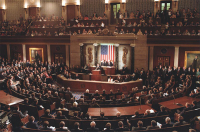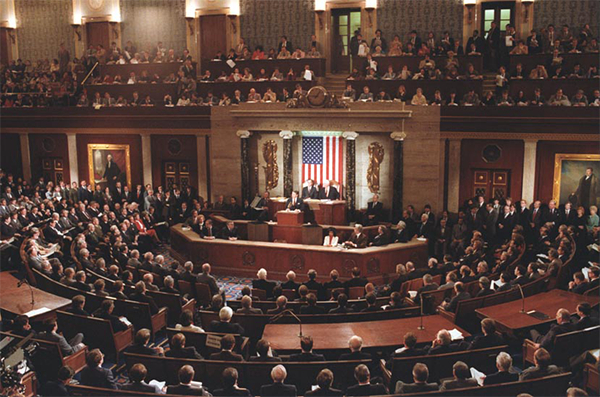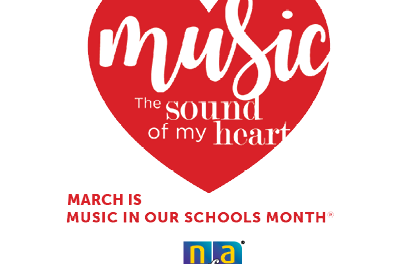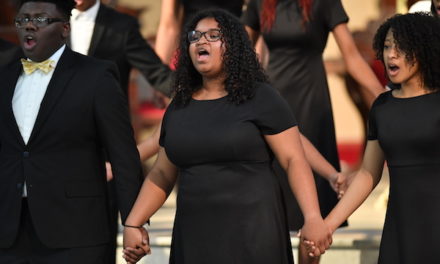
Each January, America prepares to receive the State of the Union address. Both houses of Congress attend, and the speech is broadcast widely. There is much pomp and circumstance.
Our Executive Branch may be onto something. They’re being proactive about spreading their message, not reactive. Think about that, and then consider how we might adapt that idea for music education.
Consider a “State of the Music Program” address. Once a year, a representative of your music or fine arts department prepares a written (and oral) report and reserves time to present the report to the school board.
Why present a State of the Music Program address?
There are so many good reasons to do this. First, you get to tell your story, your way, to decision-makers. That’s huge. Consider the alternative: someone else telling your story inaccurately and in a less-than-positive light.
The process of compiling the report will give you perspective on your achievements. You’ll get a birds-eye view of your program. Armed with that information, you’ll be able to plan for the future more efficiently.
You’ll develop relationships with the decision-makers in your community, and you never know how that may pay off. A school board member, remembering the warm fuzzies she felt when you welcomed her to a performance, may be more inclined to speak up on your behalf when budgeting.
You’ll be educating not only the school board but your own stakeholders and the community on the powerful benefits of music education. Again, you never know what that might do. Anyone who’s listening may become a music education advocate like you, and that could make big ripples for years to come.
What should the scope of this State of the Music Program address be?
Much like the president’s annual address, the report should touch on the past and future of the program, working together, and optimism. In the State of the Union address, “Presidents can advocate for policies already being considered by Congress, introduce innovative ideas, or threaten vetoes.”
While the music program is hardly in a position to threaten vetoes, it could (especially backed by their parent booster group) certainly push for policies that the school board is considering, introduce innovative ideas (new uniforms, different types of performances, or different performance venues), or provide a counter-argument to policies under consideration that would negatively impact the music department.
Who should present the State of the Music Program address?
This can be determined between the invested parties. If it’s just the band program, perhaps the band director should present it. Maybe it’s the head of the music department, or the chair of the entire fine arts department. (We wholeheartedly support, by the way, banding together with the other arts disciplines in your district for advocacy. There is significant strength in numbers!)
For best results, the report should be presented by a parent booster, perhaps a member of your music coalition (you do HAVE one, right?) or music booster group. In front of the school board, a parent carries much more weight than a teacher might. A teacher is an employee of the district and serves at the school board’s will. A parent, however, is both the consumer of the school district’s product (education for their child) and perhaps more importantly, a voter, who has the power to vote school board members out of office.
When is a good time to present the State of the Music Program address?
School boards typically begin their budgeting process a full year before it takes effect at the beginning of a new school year. There are a lot of moving parts, so it can’t hurt to get on the school board’s calendar before the process starts. If you’re looking to affect the 2023-2024 budget, for example, I’d say you may want to present the report Spring 2021. The school year is drawing to a close at that point, so it’s a good time to both reflect on the year and plan ahead.
After you present the report in person, publish it on your website so the world can see the amazing work your program is doing. That might be a written report, a video, a slideshow, or some combination thereof.
And while you’re at it, kick it upstairs. There’s no reason why you couldn’t share the report with local media, and government officials at the local, state, and national levels! If you do, you’ll not only be advocating for your own program, but you’ll be helping music programs everywhere.
Where should we present the State of the Music Program address?
Obviously, you’ll probably only get the school board’s full attendance and attention at a school board meeting. While you could simply submit the written report (which may or may not get read), an oral presentation to the full school board is much harder to ignore.
In preparation for the big night, you may want to present some or all of the report at a springtime gathering, like an end-of-the-year concert or the unveiling of next fall’s halftime show. It’ll give the presenter a chance to practice while making sure that all stakeholders (parents, students, and educators) are aware of the music department’s message and impact. It will also help your stakeholders to be well-informed, relentlessly positive advocates for your program.
How the heck do I create a State of the Music Program address?
Where to begin
Every year the NAMM Foundation collects their Best Communities for Music Education Survey. It provides a comprehensive snapshot of a music program. If you pull together all the information you’ll need to submit the survey by their deadline at the end of January, you’ll be in great shape to use that information for your “State of the Music Program” address. (Plus, you’ll be all ready to submit to be named a Best Community for Music Education!) While the data itself will probably be a bit dry, you can share it in the written report, while presenting the most dynamic information orally (as well as in written form). Consider adding graphs to illustrate data points in your favor.
Knock ’Em Dead
You may want to consider creating presentation slides of some of the most impactful points you’ll be making. Be careful not to fill each slide with multiple bullet points and clip art, though! You may want to consider tips from Nancy Duarte’s work.
Give ’Em Living, Breathing Examples
Each year at the State of the Union, the First Lady sits with a few invited guests of the President. Often, those people are used as success stories during the course of the speech. You can do the same thing by selecting a few students, alumni, or even community members who have been positively affected by your program. Bonus points if they can attend in-person at the meeting.
Maybe one of your students is a truly gifted performer, or an alumnus has gone on to attend a prestigious college or achieve fame and fortune. Maybe you even want to feature a short performance.
But don’t forget to highlight the “little” things, too—like the student who only came out of his shell after joining marching band, or the kid who was at risk of dropping out but didn’t want to miss music class. Consider asking current students and alumni to provide testimonials about their experience with your program and how they benefitted from staying involved.
SWAG
One of the best ways to get someone on your side is to be generous. You give them something, and they’ll feel (often subconsciously!) indebted to you, and they’ll actively look for ways to (more than!) even the score. Hook up your administration and school board with tee shirts or other swag, accompanied by a handwritten note thanking them for their support of your program. Even if you present it to a school board member who has been —ahem— LESS than supportive of your program, being publicly thanked for their support will hopefully make them feel (again, often subconsciously!) like they have to stick with that “music supporter” label.
Are you kidding me?
This sure sounds like a lot of work, but not all of it needs to be done right away. You can build up to it. Any efforts are better than none at all. Perhaps this year, you send or hand-deliver thank-you notes, or thank the administration and school board in person at their next meeting. Next year, you can work on pulling together the data for the Best Communities for Music Education Survey. But remember, any positive exchange with the decision-makers in your community will reap positive benefits, so look for opportunities! Invite them to a performance, or on a trip. Or even just take a moment to drop them an email, thanking them for their service to the district and for their support of music education. You’ll be glad you did.
While your State of the Music Program address probably won’t be attended by members of Congress or the Joint Chiefs of Staff, it’s still a huge opportunity for you to recap each year and outline your vision. Maybe you’ll want to have members of your booster group regularly attend each school board meeting…just in case of emergency.) And no matter how it goes, at least you won’t have to endure a carefully crafted “opposition response!”




